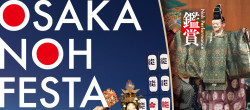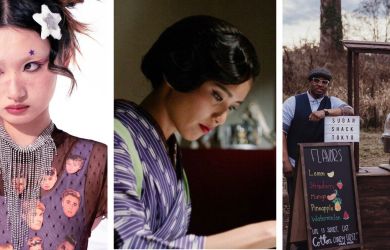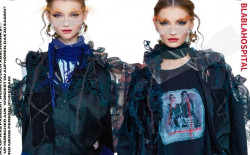
April 8, 2010
My Darling is a Foreigner
Originally published on metropolis.co.jp on April 2010 My Darling is a Foreigner, Saori Oguri’s illustrated tales of her life with American husband Tony László, has been tough to avoid recently. First released in 2002 to modest acclaim, the series became a slow-burning success, eventually ratcheting up sales of more than 2.5 million copies. If you […]
By Metropolis
Originally published on metropolis.co.jp on April 2010
My Darling is a Foreigner, Saori Oguri’s illustrated tales of her life with American husband Tony László, has been tough to avoid recently. First released in 2002 to modest acclaim, the series became a slow-burning success, eventually ratcheting up sales of more than 2.5 million copies. If you spent much time riding the JR over the past couple of years, you’ll probably recognize it from the animated clips that used to play on the train TV screens. The story is now poised to hit cinemas in a heavily promoted live-action movie starring Mao Inoue (Hana Yori Dango) and newcomer Jonathan Sherr.
The success has turned Oguri and László into one of Japan’s most high-profile international couples—albeit one whose cartoon likenesses are far better known than the people themselves. Well, at least it means they probably don’t get stopped for autographs when they go out to buy groceries.
My Darling is a Foreigner is no tell-all memoir, consisting rather of a series of gently comic episodes from the couple’s life together. It’s warm and likeable, if not terribly enlightening—the kind of thing that you should read for fun, rather than for insights into the realities of interracial marriage.
To coincide with the release of the film, Media Factory has issued an English version of the first volume of the series that’s translated by László himself. (Funny, that: in the afterword, Oguri explains that her then hubby-to-be had to stop reading the book after a few chapters, having found it all a little too close to the bone.) It’s pitched at English learners as much as at an overseas audience—the original Japanese text has been retained, and the chapters are interspersed with “Tony’s English School” sections in which László explains key language points.
This is entirely in keeping with the source material, which often does a better job of reintroducing Japanese readers to their own culture than in edifying them about foreign ones. A dedicated nihongo nerd, László bombards Oguri with obscure questions about Japanese (“What does the ‘yare’ in ‘yare aa shiro kou shiro’ mean?”), or befuddles her by grasping for fumu (stomp) when he really wanted fumikiri (railroad crossing). When she proposes a game of “acchi muite hoi”—that rock-paper-scissors follow-up in which you try not to look the same way your opponent is pointing—it reduces him to a nervous wreck.
Other parts of the book are likely to resonate better with a non-Japanese audience. László is depicted as a loveable oddball with a delicate sensibility and a passion for chocolate ice cream, one whose fluffy visage is compared at one point to an alpaca. When the couple go out for lunch together, he insists on asking for a different wine to replace the thin plonk that came with his set meal (and gets one that’s even worse). A discussion of whether humor is a cultural trait ends with Oguri realizing that “this guy laughs at anything.” The petty domestic tiffs over housework will be familiar to pretty much any couple.
“I suppose that, in the end, the kind of marriage you end up with is determined not by whether you marry a Japanese or a foreigner,” Oguri writes in the foreword, “but rather by the personalities of the two people involved, and how they are alike and different as individuals.” Fair enough—but why pick a title like My Darling is a Foreigner? Why not My Darling’s Name is Tony, My Darling Has a Beard, or My Darling is a Serial Scrimper and a Little Bit Eccentric?







